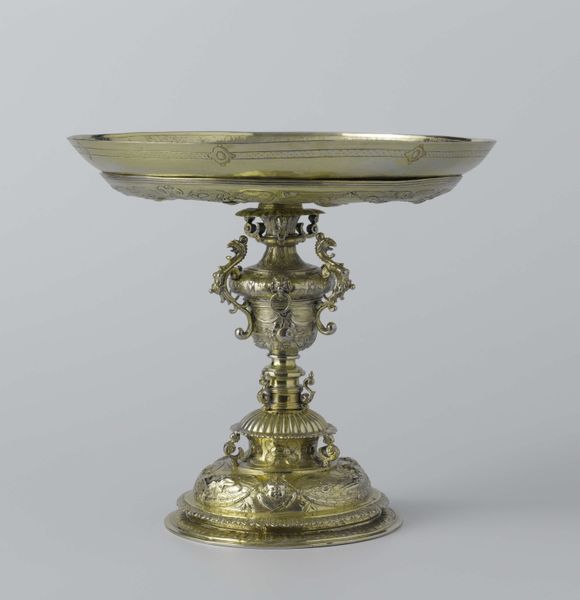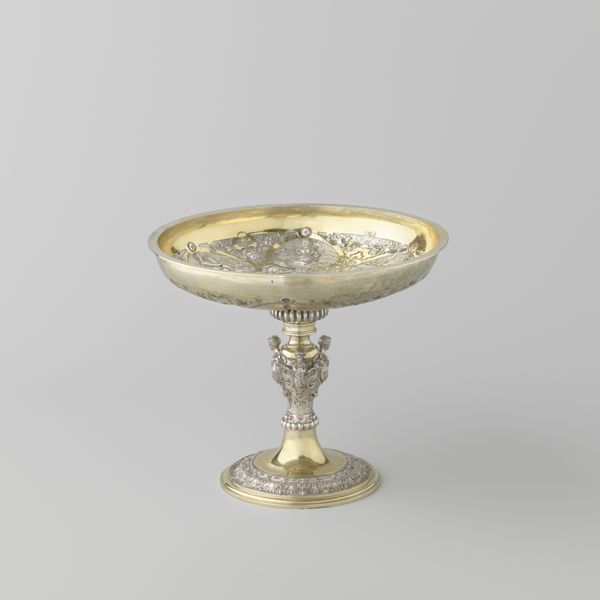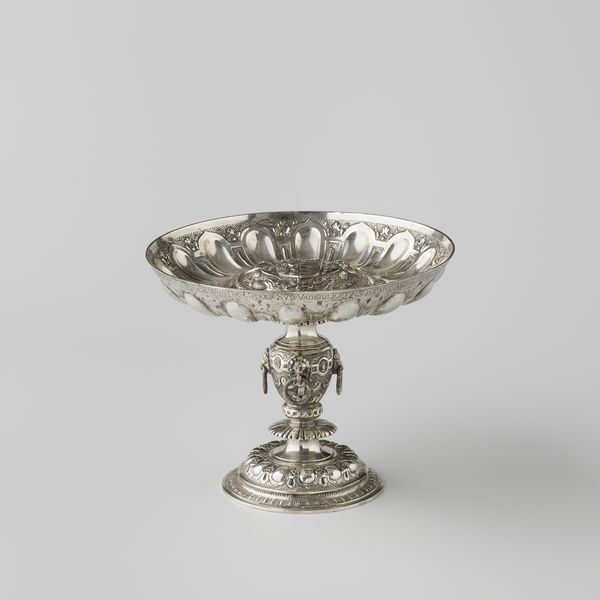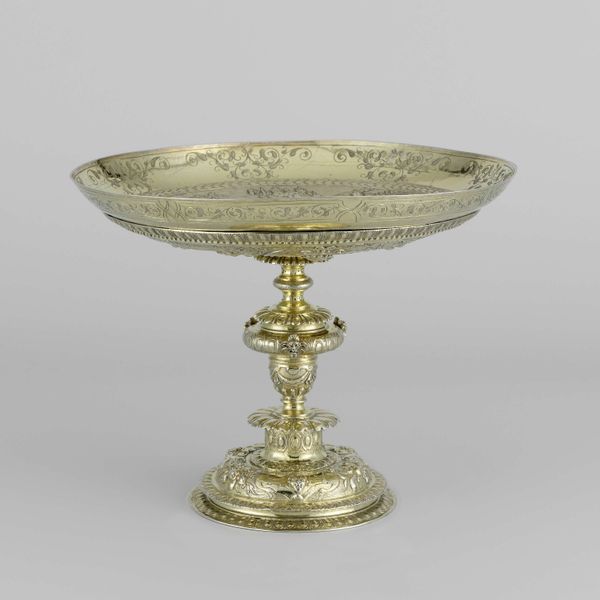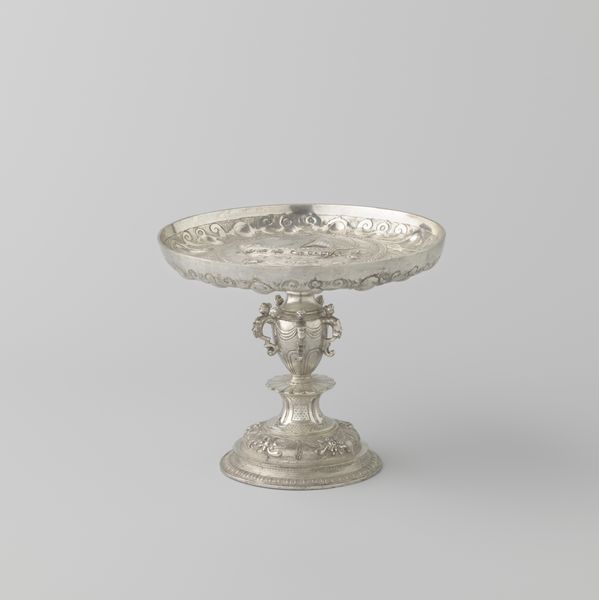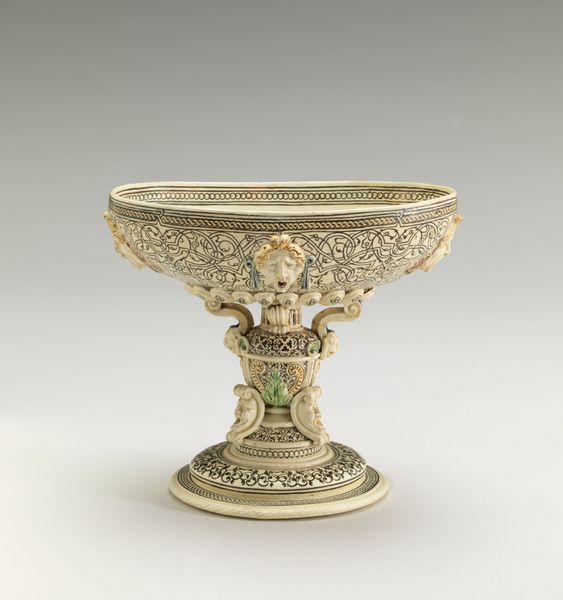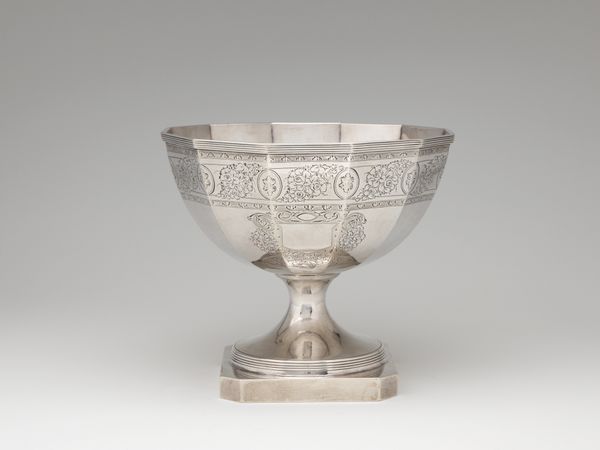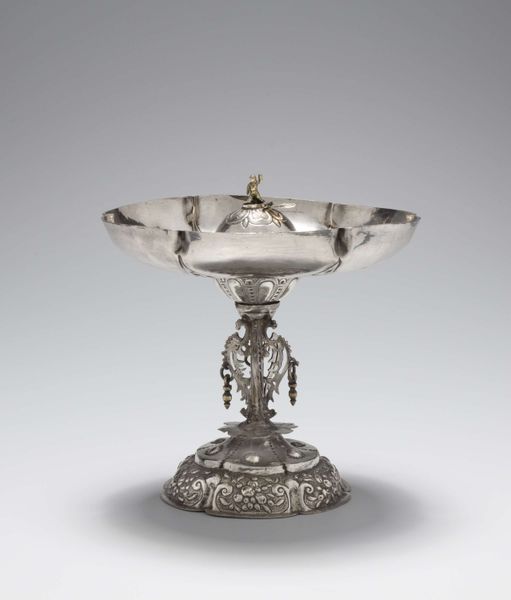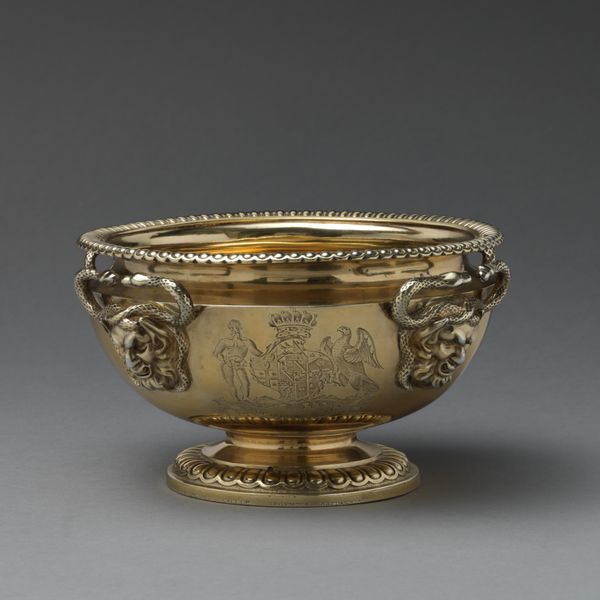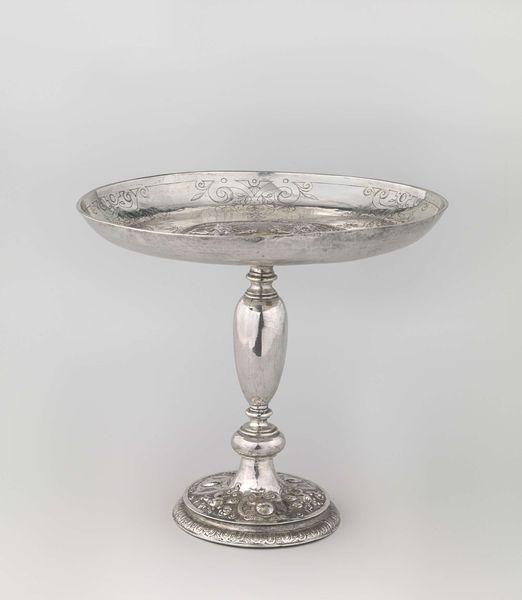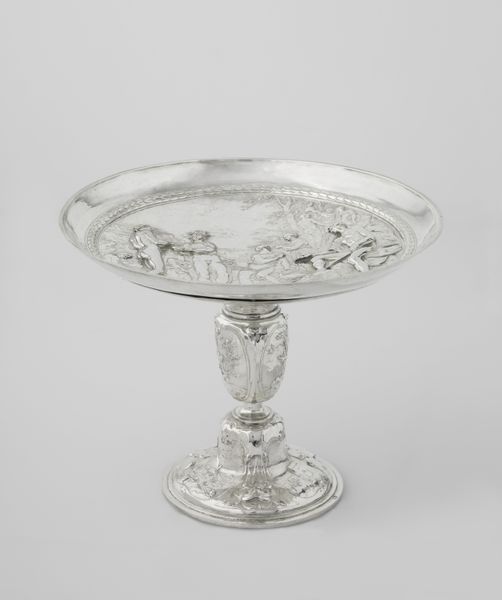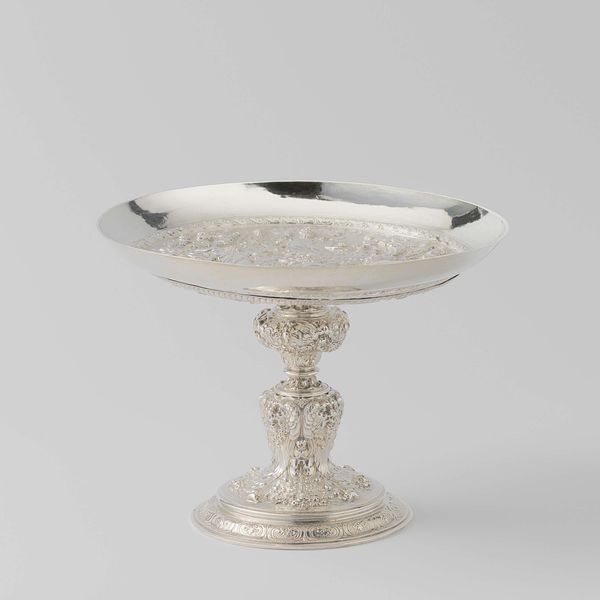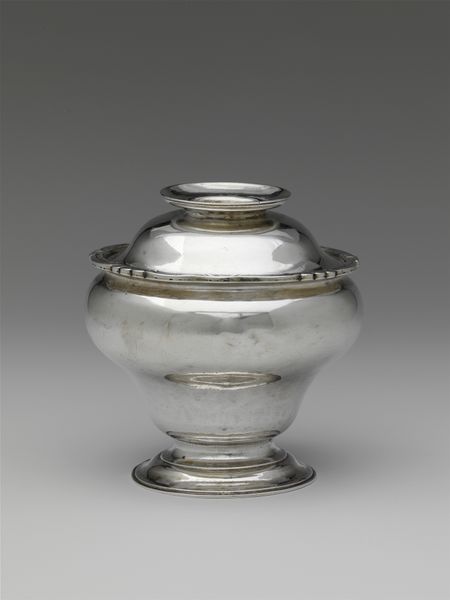
Galvanoplastische reproductie van een tazza met voorstelling van Lot en zijn dochters 1881
0:00
0:00
metal, ceramic, sculpture
#
metal
#
ceramic
#
sculpture
#
ceramic
Dimensions: height 20.0 cm, diameter 18.3 cm, weight 832 gr
Copyright: Rijks Museum: Open Domain
Editor: So, here we have an object described as a ‘Galvanoplastische reproductie van een tazza met voorstelling van Lot en zijn dochters,’ made around 1881 by Elkington & Co. It's currently held at the Rijksmuseum and appears to be metal or ceramic. The level of detail is just stunning. What strikes me most is its potential use – was it purely decorative, or did it serve a purpose within a specific social context? How do you interpret this work, considering the history of decorative arts? Curator: That's a great question. While appearing decorative, pieces like this tazza actually played a complex role in Victorian society. Think about what a galvanoplastic reproduction *is*: it’s essentially a copy. Why create such a meticulous copy? It speaks volumes about the rising middle class's aspiration to own items previously exclusive to the aristocracy. It democratizes access to art, though, importantly, within a structure that still values the ‘original.’ Do you see the tension there? Editor: I do! So it's about access, but also about status through imitation. The reproduction itself becomes a signifier. And the biblical scene, Lot and his daughters...was that also a deliberate choice? Curator: Precisely. Biblical scenes were popular, offering moral narratives—though this particular scene is certainly complex and open to interpretation, shall we say! Reproducing it using this technology served to legitimize the owner’s social standing but also brought religious connotations into their display of wealth. Consider also, how mass production methods change perceptions about 'art' versus 'craft'. Editor: That's fascinating. I never considered the social implications of art reproduction like that. I always focused on the object itself. Curator: That’s understandable! And that tension—between art object and social signal—is one worth exploring. I will definitely view these reproduction processes differently going forward!
Comments
No comments
Be the first to comment and join the conversation on the ultimate creative platform.
